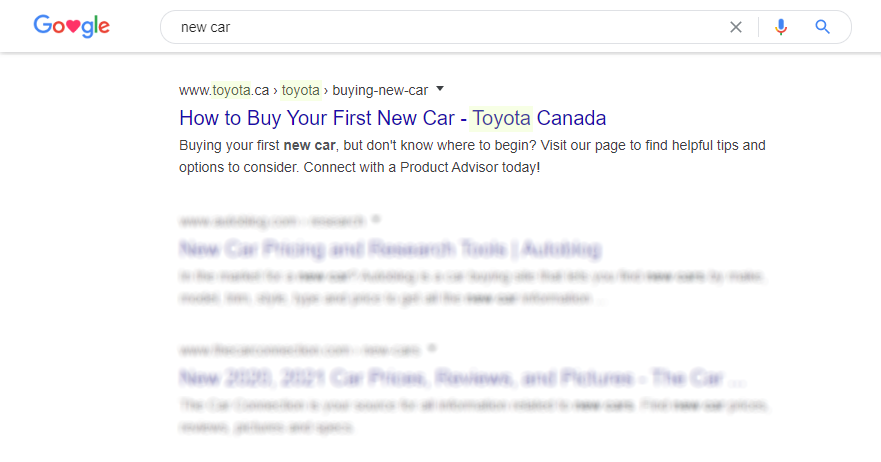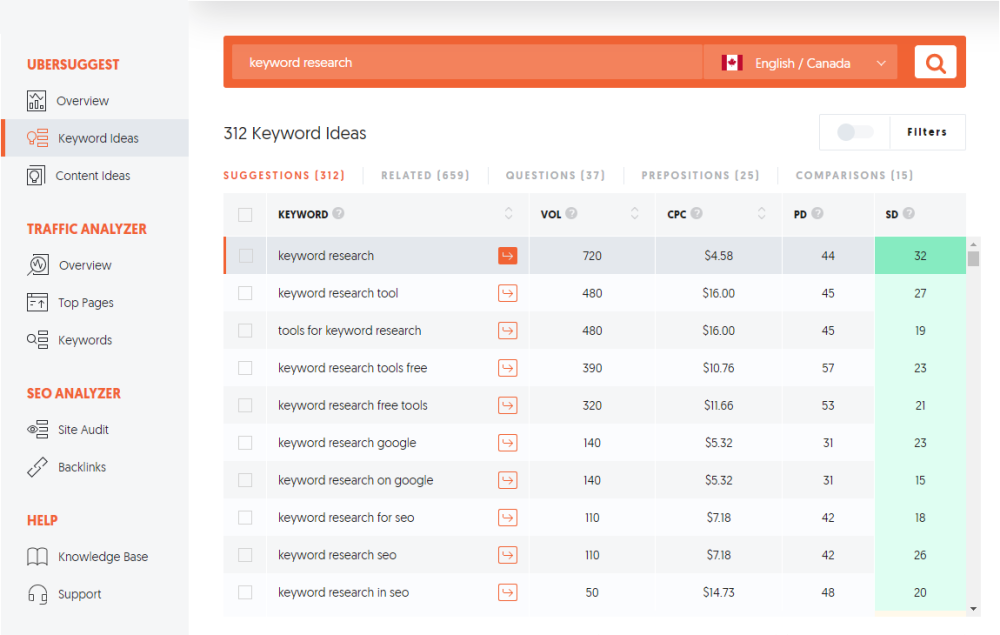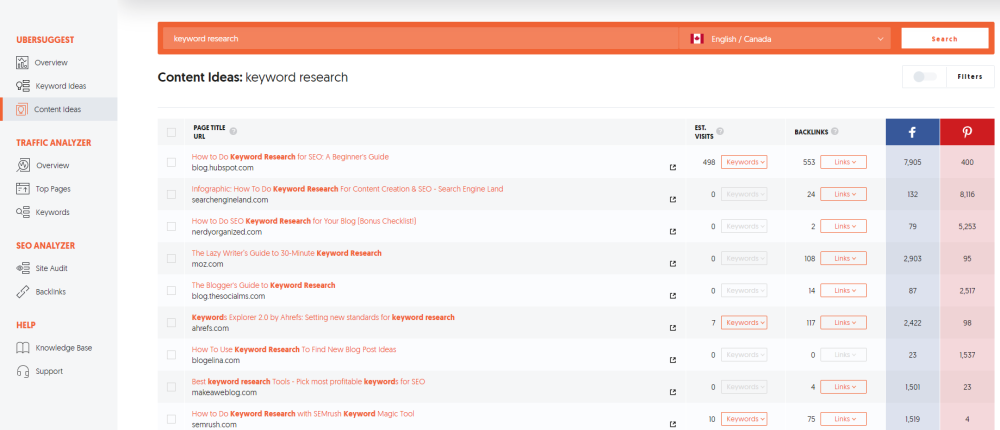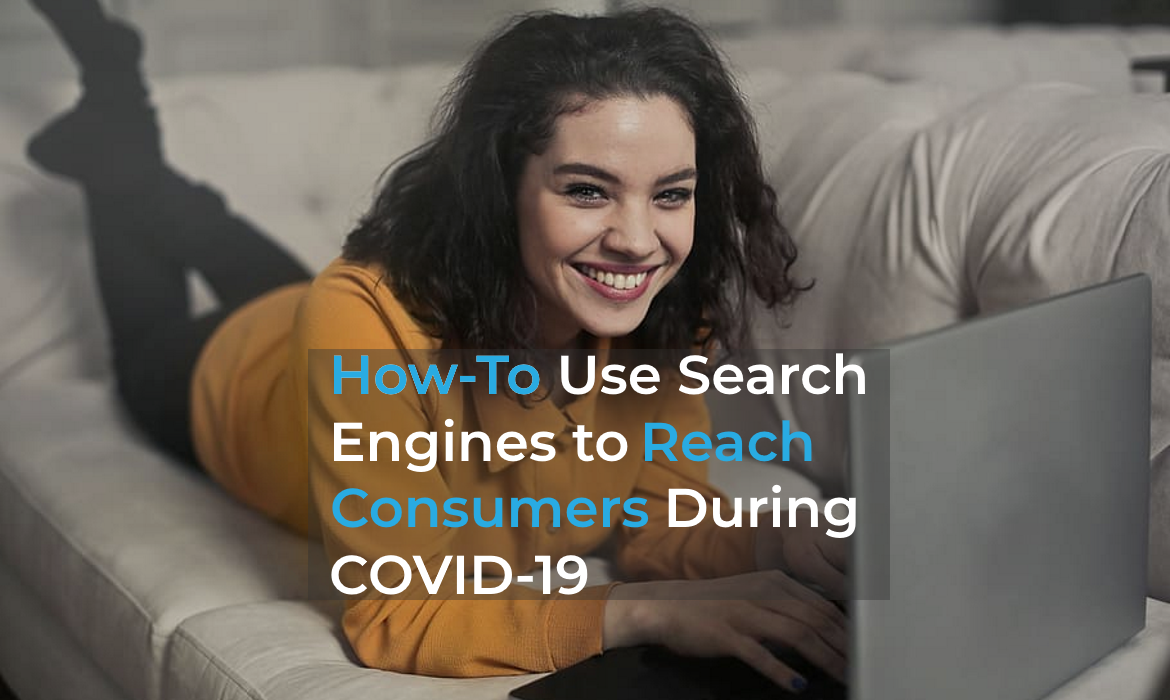How-To Use Search Engines to Reach Consumers Now & Post COVID-19
The spread of COVID-19, across the globe, has disrupted the way consumers buy goods and services from their local businesses. With the coronavirus closing the doors to most brick and mortar stores for an uncertain amount of time, business owners are moving swiftly to the Web in search of customers. To help your company reach Internet consumers and capture their attention during and after the COVID-19 outbreak, we recommend that you implement these simple website improvements to increase your exposure in search engine results.
Search Engine Optimization
The consumer journey is a succession of touchpoints audience members have with your brand. Very often, an organic search is the earliest touchpoint between consumers and businesses. Research from Forrester (2017) discovered that more than 70% of consumers begin their buying journey with a search engine, and 74% reported using a search engine for consideration and purchasing. Furthermore, an attribution analysis study performed by Bing found that in 58% of instances, search was the final or only event within the consumer’s purchase journey.
A click is no longer simply a click; it represents an interaction with an individual consumer on a personal journey.
Note: Although in the past it has been Google - and to a lesser degree Bing - Internet users have relied upon to search for information, consumers are increasingly using YouTube to perform their first search on a topic.
Meta Data
It may come as a surprise to you that some searches do not result in a click on any search engine result. The information provided by the webpage, and displayed in the search engine’s snippet, is sometimes all the information a search user needs at this stage of their purchase journey. This underscores the importance of using web page meta tags to communicate an effective message to search engines.

The title and description seen in search result pages is gleaned from the information provided in your web page’s meta title and description. If you do provide this information, search engines will extract the most relevant pieces of text from the web page, to display in your snippet. To display properly in search results, the character spacing permitted is the equivalent of approximately 60 characters for the web page’s title, and <160 characters for its description.
When creating or editing a web page, the meta data fields are often found at the bottom of the web page; beneath the WYSIWYG editor field.
QuickSilk has built-in character counting tools for each meta field. If you’re not using QuickSIlk, use a character counter tool to calculate your character totals.
Although in some instances consumers do not click on any of the search engine’s results, the awareness generated from the information communicated in the snippet can inspire a subsequent brand search.
For example, in this Google search for “new car”, the consumer would see an article from Toyota in the number one position. There are three references to the brand name in the search engine snippet. This generates brand awareness, brand recognition, and can result in ensuing brand searches.

Content
The content you produce and share with your audience, must be created to convey a specific message that clearly answers the search user’s query. It must partner visual assets and text, as well as appropriate timing, to inspire consumers to engage with the content and jump at your call-to-action.
Keywords & Phrases
The first step in creating content that captivates consumers and search engines, is to identify what information your Internet audience is most commonly searching for; in particular, the topics closely-related to your products/services, industry, and even your competitors.
To determine the most popular searches, there are two keyword data tools we can recommend:
Google’s Keyword Planner
Obviously receiving search data directly from a search engine giant like Google is ideal. That said, the greatest obstacle to using Google’s keyword planner is that you must have an AdWords account to access the tool. This requires a credit card.
Ubersuggest
The Ubersuggest tool provides keyword insight, such as consumer search traffic, paid and organic competition, and keyword-specific topic ideas, to satisfy your content marketing efforts. Because there is a free version of Ubersuggest, we will use it to demonstrate how to uncover content ideas that captivate your audience members and the leading search engines.
Once we input the search phrase “keyword research” into the keyword phrase field, chosen Canada (English) as the language of choice, and selected the Submit button, we are presented with an overview of the monthly search volume and current competition for the phrase.

In the dashboard’s left-hand navigation, users will discover the Keyword Ideas and Content Ideas tabs.
When the Keyword Ideas tab is selected, the page displays a list of suggested and related keywords, as well as frequently searched questions, with the corresponding number of monthly search queries and estimated SEO competition. These figures will identify which keywords have the most search traffic and the least competition and, in doing so, produce great topic ideas.

When the Content Ideas tab is selected, the page displays some popular related content ideas, with their corresponding backlinks and estimated monthly visits, as well as their social shares on Facebook and Pinterest. This provides valuable insight into what topics resonate with the audience and inspire the most engagement.

Ubersuggest delivers insight into the search and social media strategies that are performing well for your competitors. This data enables you to study their successes, improve upon their approach to content marketing, and gain the advantage.
Image Alt Tags
For the moment, search engines cannot “see” images. To interpret them, search engines infer context from the information communicated in the image’s alt tag - which is the alt attribute of an img tag, also known as the "alt attribute" or "alt description". This helps them determine what the image is and how it relates to the surrounding text ← this is important. If the search engine doesn't clearly understand what is conveyed in the picture, it cannot determine its relevance to the words on the page, and prevents the image from being indexed properly.
In most content management systems, clicking on an image in the body of a web page will open a rich text module, where you can edit the image's alt text.
The best format for conveying context in the alt tag is to apply sufficiently descriptive text, without “stuffing” the keywords you identified above. Create alt text that both describes the image and, where possible, includes the keyword or keyword phrase you're targeting.
- Keep it short. Aim for 125 characters or less.
- Be as specific as possible.
- Use your keywords. Avoid keyword stuffing.

- Okay alt text: woman on stairs
- Better alt text: woman walking down stairs
- Best alt text: woman with black purse walking down stairs
Note: Each image on your web page should have an alt text, not just for SEO purposes, but also because visually impaired people will not otherwise know what the image is about.
Linking
One of the greatest influences on your success in search results is linking - both internal and external. This refers to the strategy you use to link the pages within your website, and how other people link to your web pages. The most important consideration is the word or phrase they choose to link to you; better known as anchor text. Secondly, it is the page they choose as a destination for the link.
Hypertext is text with hyperlinks. A hyperlink (more commonly referred to as a link) is the reference to data that can be followed, to a new web page or document or to a specific element within a document, by clicking or tapping it. The text that is linked from is known as anchor text, and most often appears in blue once the link is inserted. The objective is to have the anchor text be one of the keywords or phrases you are trying to rank for.
In addition to the keyword relevant anchor text, search engines weigh the relevance of the web page the hypertext link is directing users to. The more relevant and informative the page is, the greater the perceived value. For example, the anchor text → “keyword research” ← hyperlinked to a web page about performing keyword research would be regarded as both highly relevant and valuable.
When creating blog posts and web pages on your own website, take advantage of every opportunity to use keyword anchor text to link visitors to your most relevant internal pages and blog posts. Use hypertext links to take visitors on an educational and entertaining journey through your content.
Communicating More Effectively
While consumers are self-isolating at home, they are performing searches using their favourite search engine. Regardless of whether this is Google, Bing, or Duck Duck Go, you can implement the fundamental strategies listed above to communicate more effectively with search engines and consumers. Doing so will improve your exposure to an ever-increasing number of Internet shoppers using search to begin their online shopping journey.

![Create Content That Accomplishes Marketing Goals [How To] Create Content That Accomplishes Marketing Goals [How To]](/web/default/files/public/public/how-to-create-content-accomplish-marketing-goals-400x400.png)
